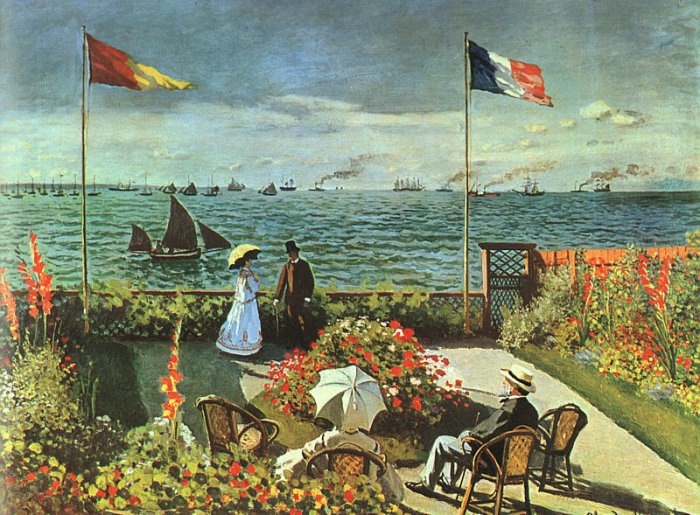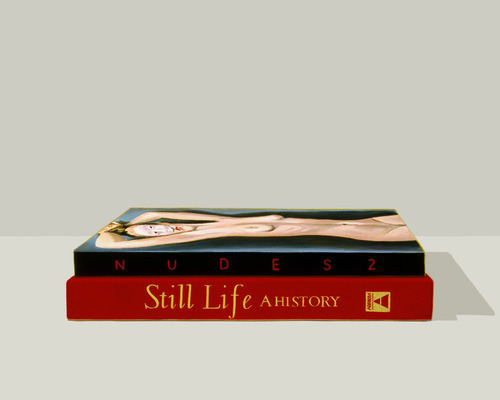
Third-generation Turlock resident John Karl Claes traveled across the country to earn his master’s degree in fine art in the ’90s and then returned to California to paint Central Valley-inspired landscapes full time. His brushwork sustains his family of four, including two young sons. He shows his latest Valley scenes at Elliott Fouts Gallery this month and says in his artist statement, “Even though I am strongly influenced by this landscape, I am essentially an abstract painter.” Here’s what else he had to say.
Where’s your studio space?My studio is across town. I go to it nearly every day, except for weekends. Monday through Friday I go to work, just like everyone else. …
The secret is to figure out how to keep living without making a living wage for periods of time. That’s what I’ve discovered. People always ask me, “How do you do it?” Well, you have to figure out how to live your life very inexpensively. My wife did work before we had kids, so obviously, she was very supportive of my efforts.
Your work is of agricultural landscapes. Are you painting places you actually encounter, and where are they?I work from my memories and then my feelings about the place. I work from my environment, so it takes me a while. Obviously, I’m from here, so it’s kind of an accumulation of images that have built up. I’ve built up a visual vocabulary in my mind’s eye that I can work from, and as I see new things, I can integrate those in my studio practice.
When I was in school back East, at the University of North Carolina, it took me a while to see how I was going to paint landscape. … When I came back to California, I had never really painted [landscapes]. I was an abstract painter. … I had this idea in my head of what I wanted it to look like—big expansive landscapes of what the Valley can portray—I just didn’t know how to do it. And then a friend of mine who’s a private pilot, took me up and literally, we took off from the small airport here, and I was like, “Oh my. This is what I can do.”
Someone asked me the other day what makes a good landscape painting? So I’m going to ask you now.Our culture today, especially in art, it’s really “anything goes,” so what makes a good landscape for one person wouldn’t necessarily make a good landscape for someone else, and I think that’s where style comes in. But, I mean, personally, a good landscape has to have—any painting is about color. It’s pretty obvious in my work, color is vibrant. And its color and the position of those colors, thus making the composition.
You have a blog you update pretty regularly?I try to do it once a week. Blogging for me helps me think about the work verbally, or written. Painting for me is obviously visual, and things make sense to me visually before things make sense to me in one part of my mind, but not the other part of my mind.
I always feel kind of bad asking artists to verbalize something they have a better visual language for.(Laughs.) It’s part of the job. I have to be able to talk about my work to some level of articulation.
What was the most surprising thing you found once you went pro?It’s the business stuff: I have to keep track of my books; I have to keep track of where things are on the inventory list, what’s where and when it’s being moved—the business end. They don’t talk about that at all in school. It’s just something you kind of have to learn as you go. You gotta learn from your mistakes. That and framing. Framing takes a lot of time. I hand [make] all my frames.
I read on your blog that you were getting inspired painting with one of your kids. How would you feel if one of your kids chooses an artistic path?Well, the big joke was, when my oldest was born—he’s 6 now—I told all my artist friends, “I’ve already told him, ‘You can’t be an artist.’” And then I have a friend who has older children, and I was talking to him about it and said that I already told [my kid] “You can’t be an artist.” And he has a child that’s just graduated college, and he looked at me with a straight face and said, “It doesn’t do any good.” (Laughs.)
I would tell my kids what my parents told me: You can do anything you want, as long as you love it. My father was a professional photographer for 35 years, and he loved taking photographs. He told me that I could do what I love, and I’ll encourage my kids to do the same thing.
That’s ridiculous. You might just want to send them off to boarding school instead.(Laughs.) That might not be a bad idea.










































